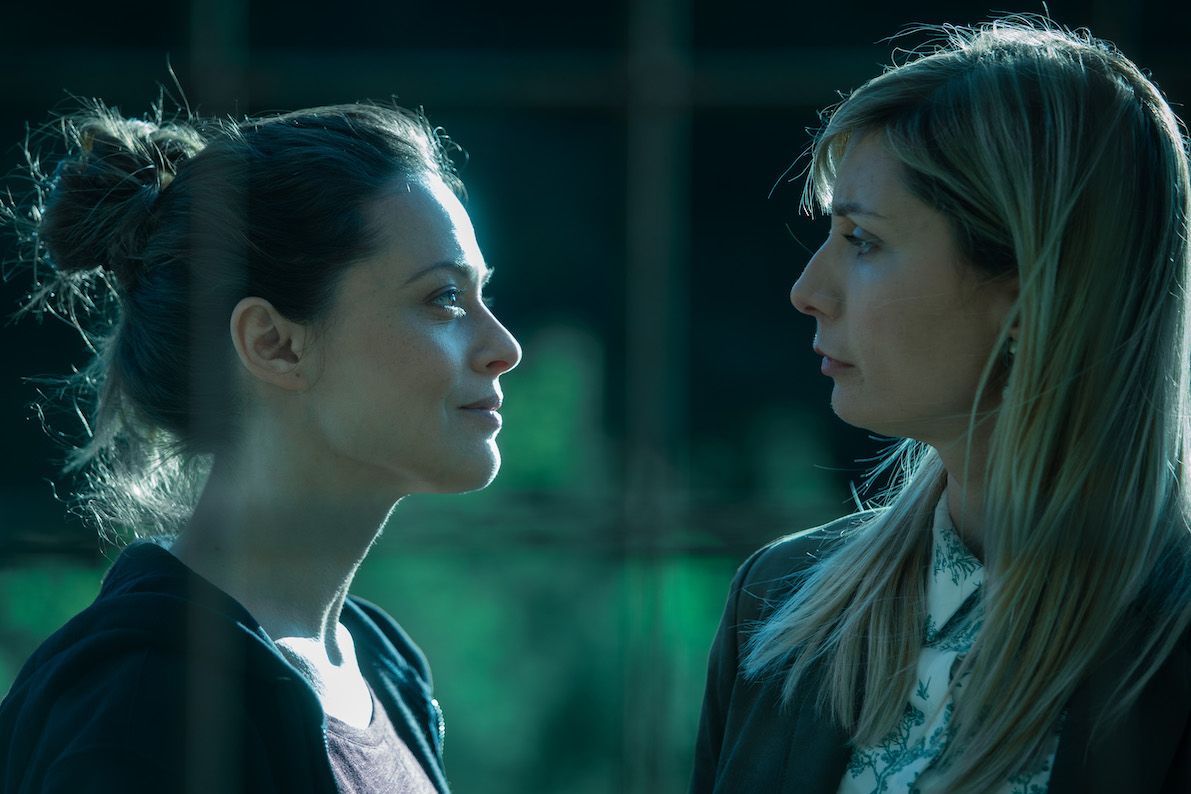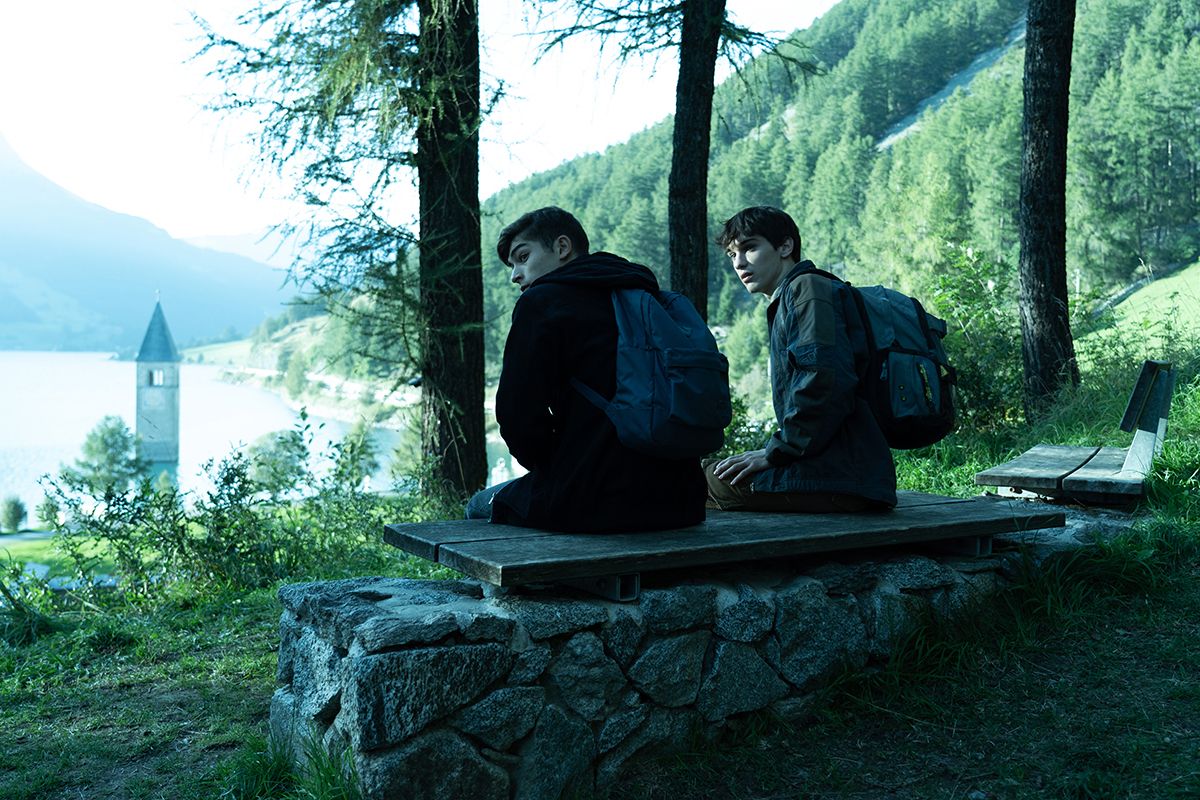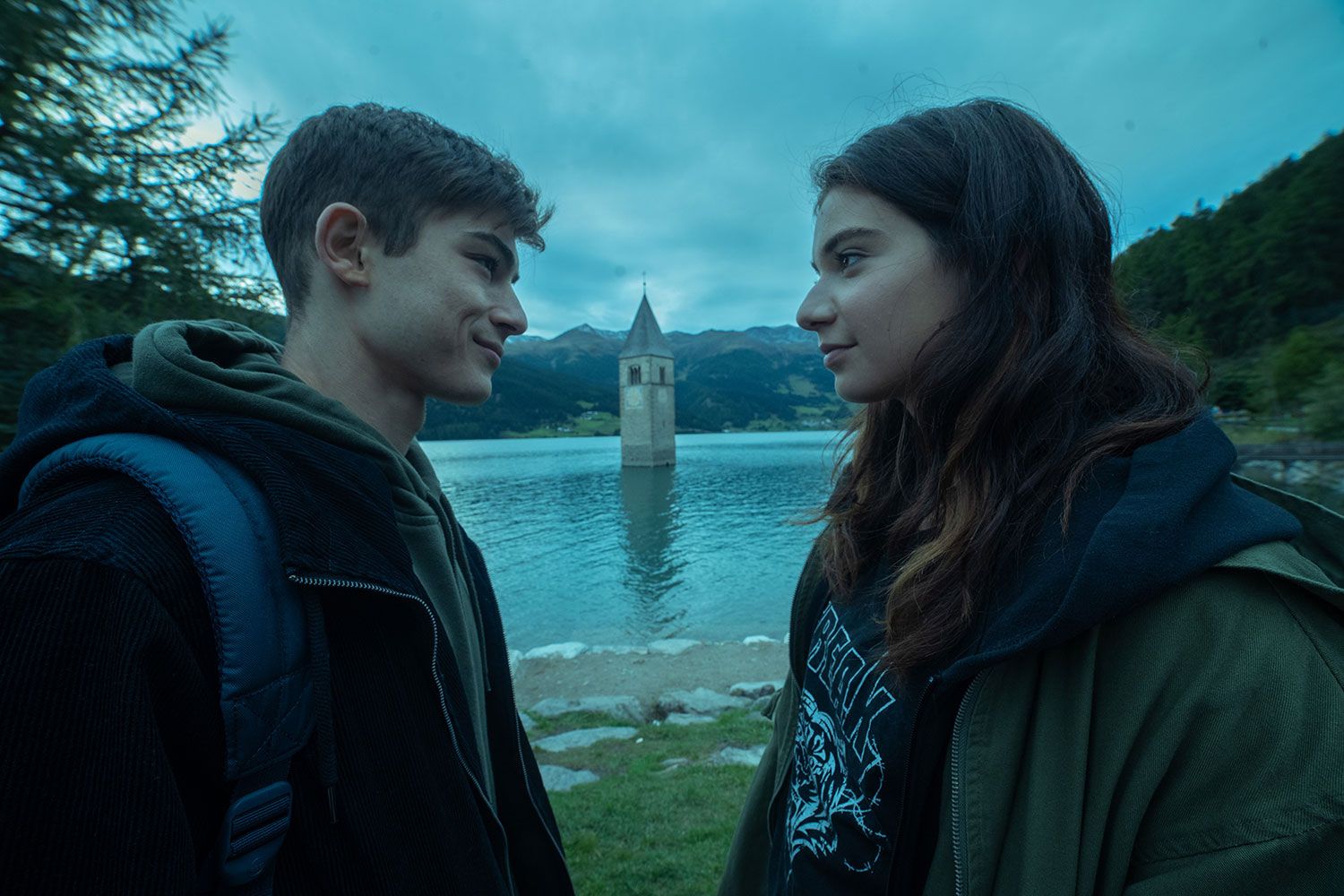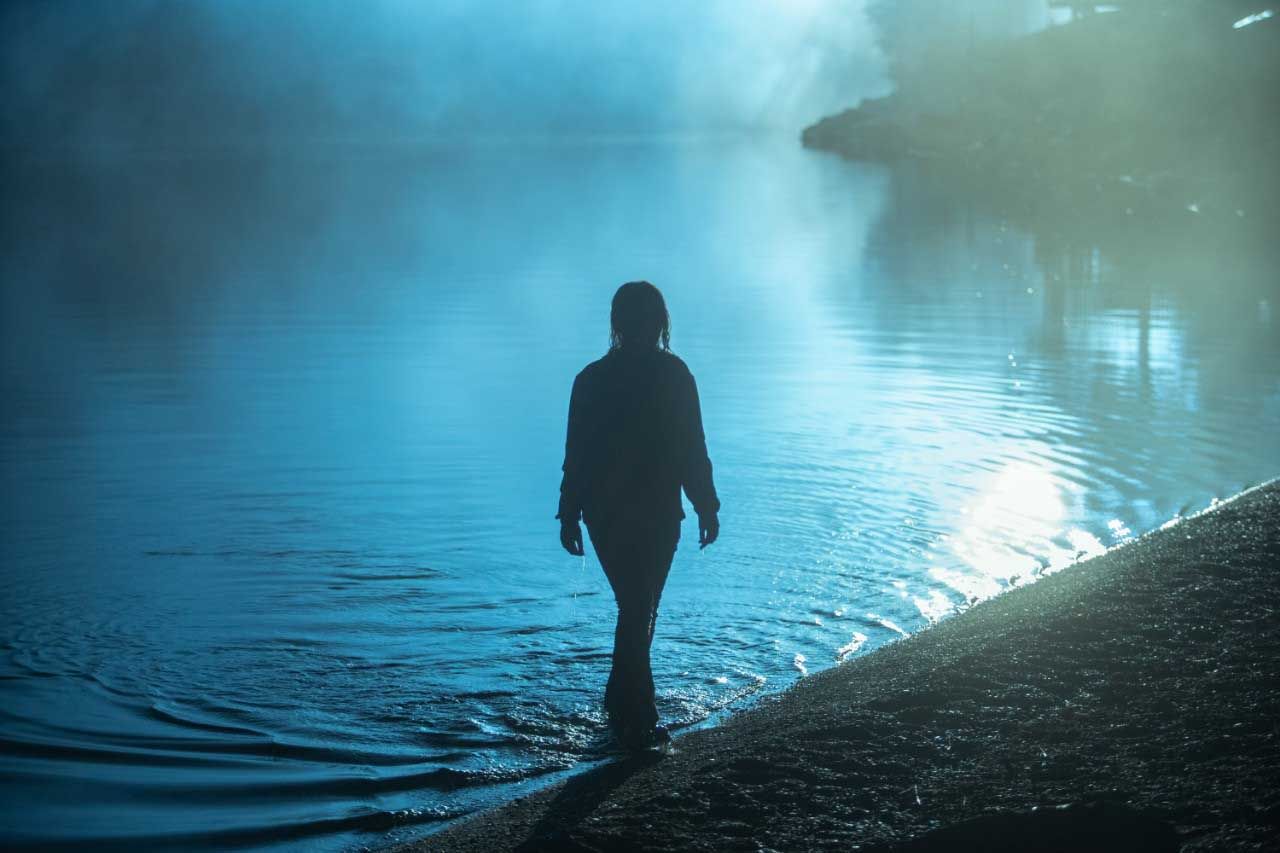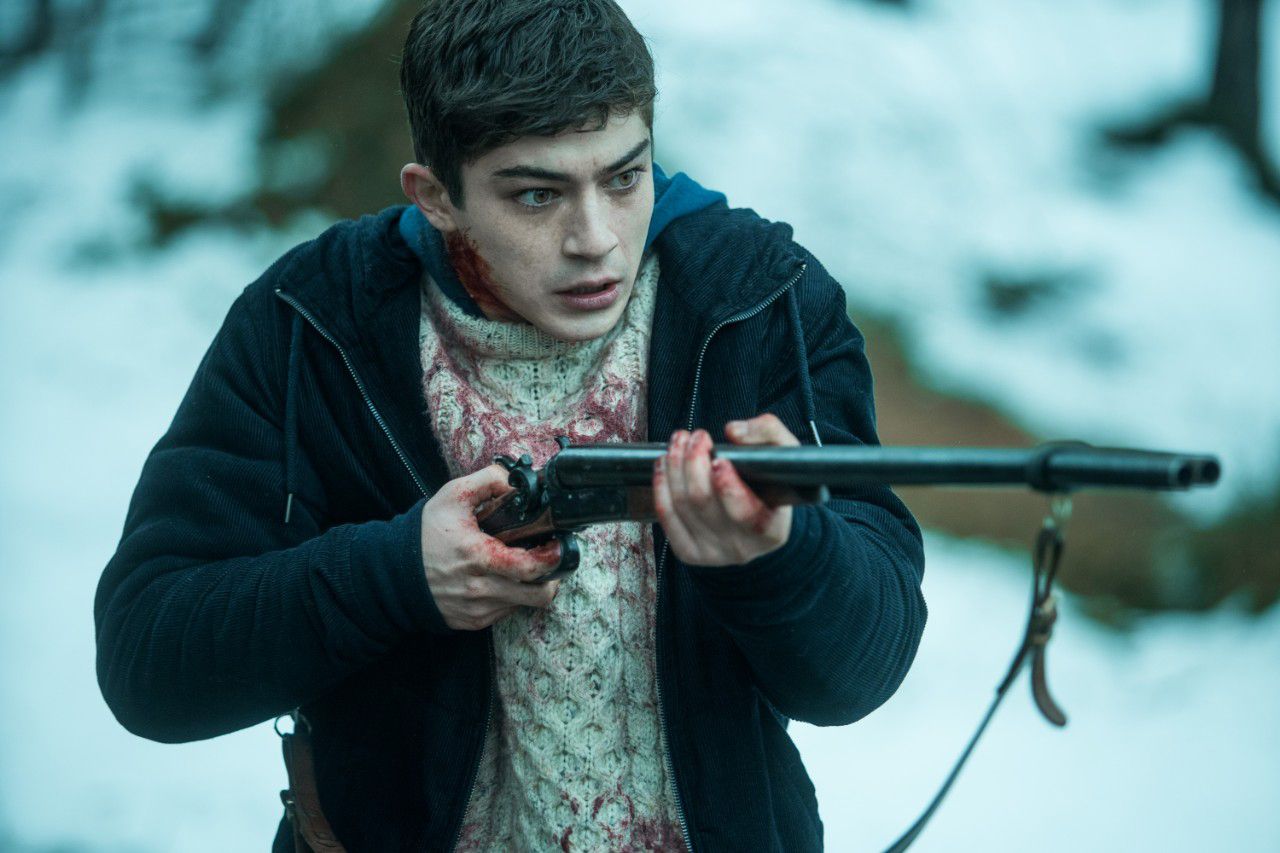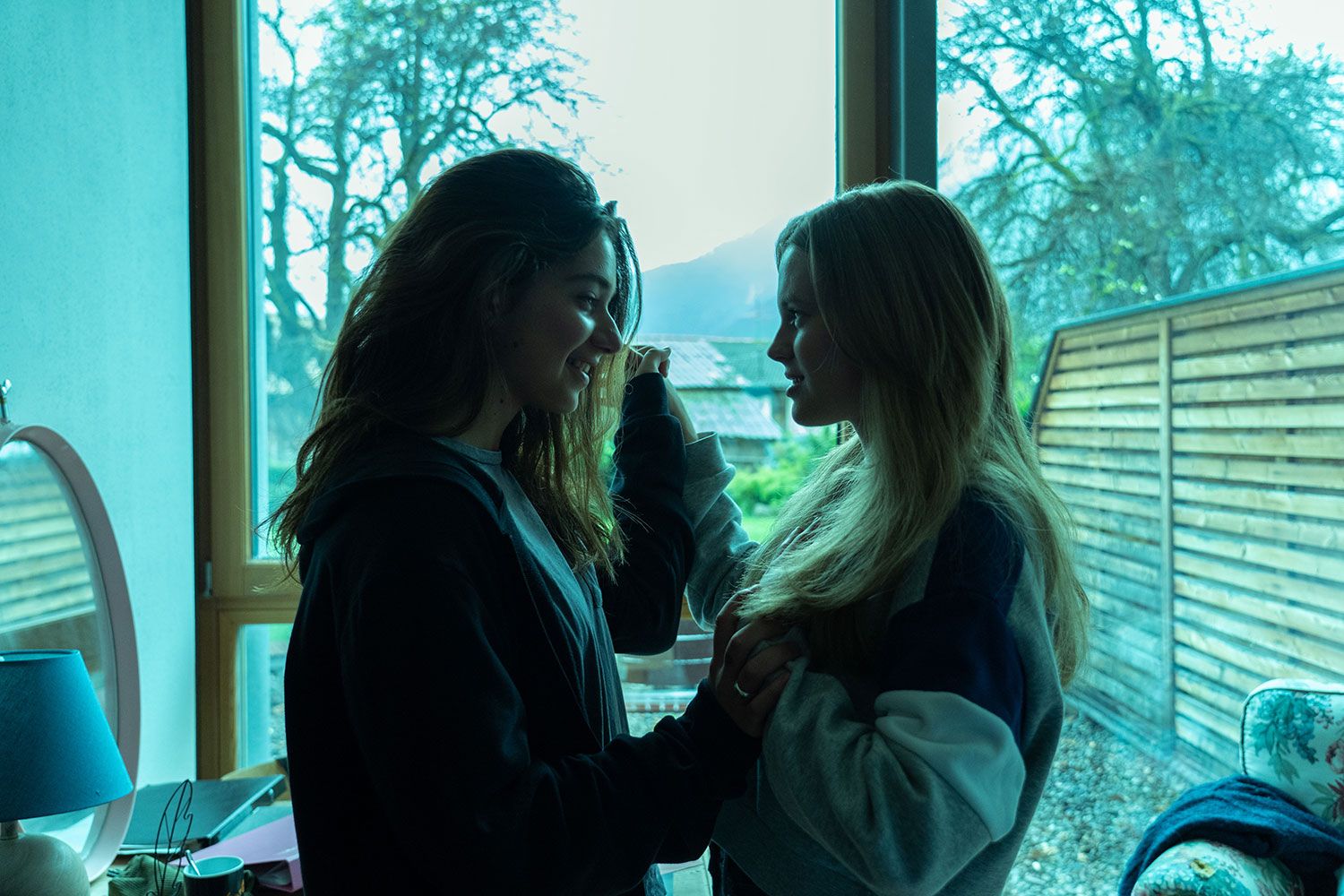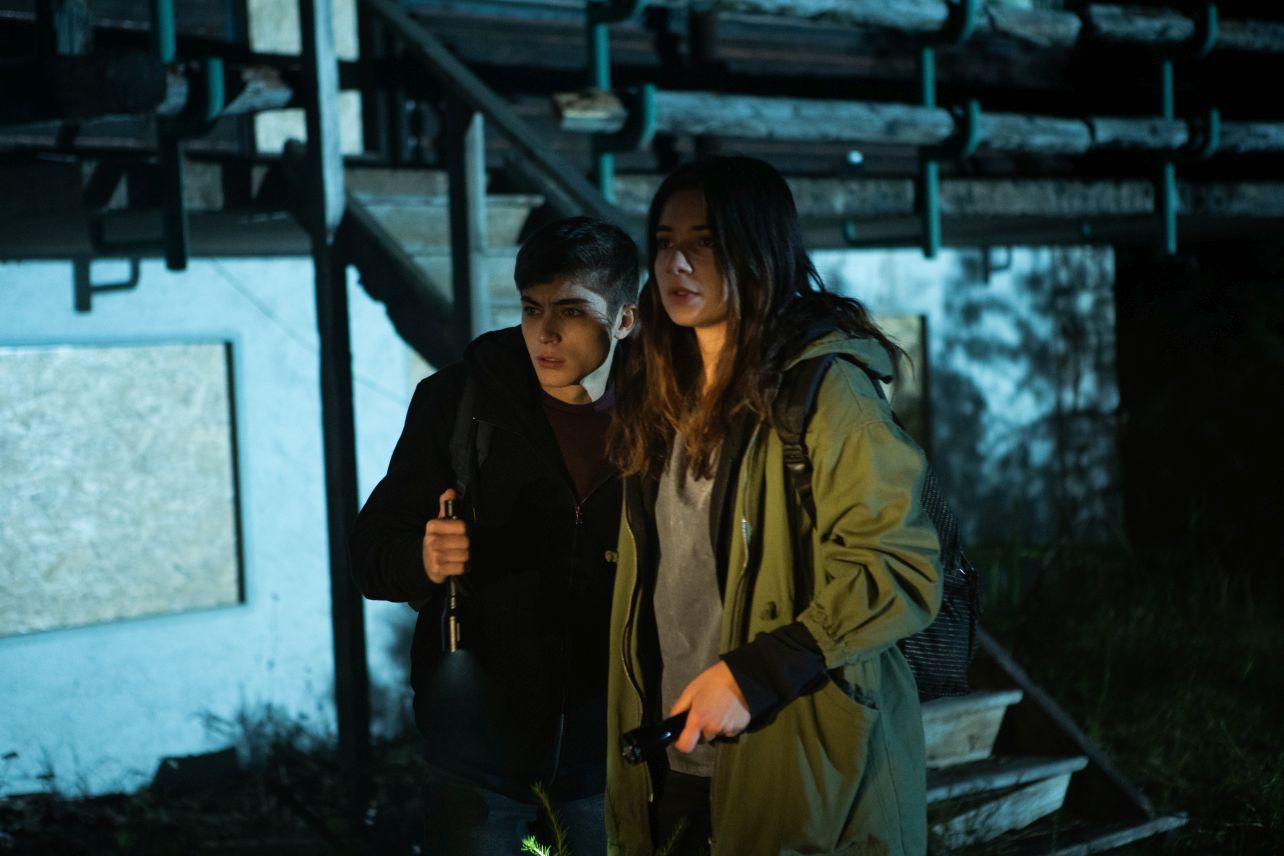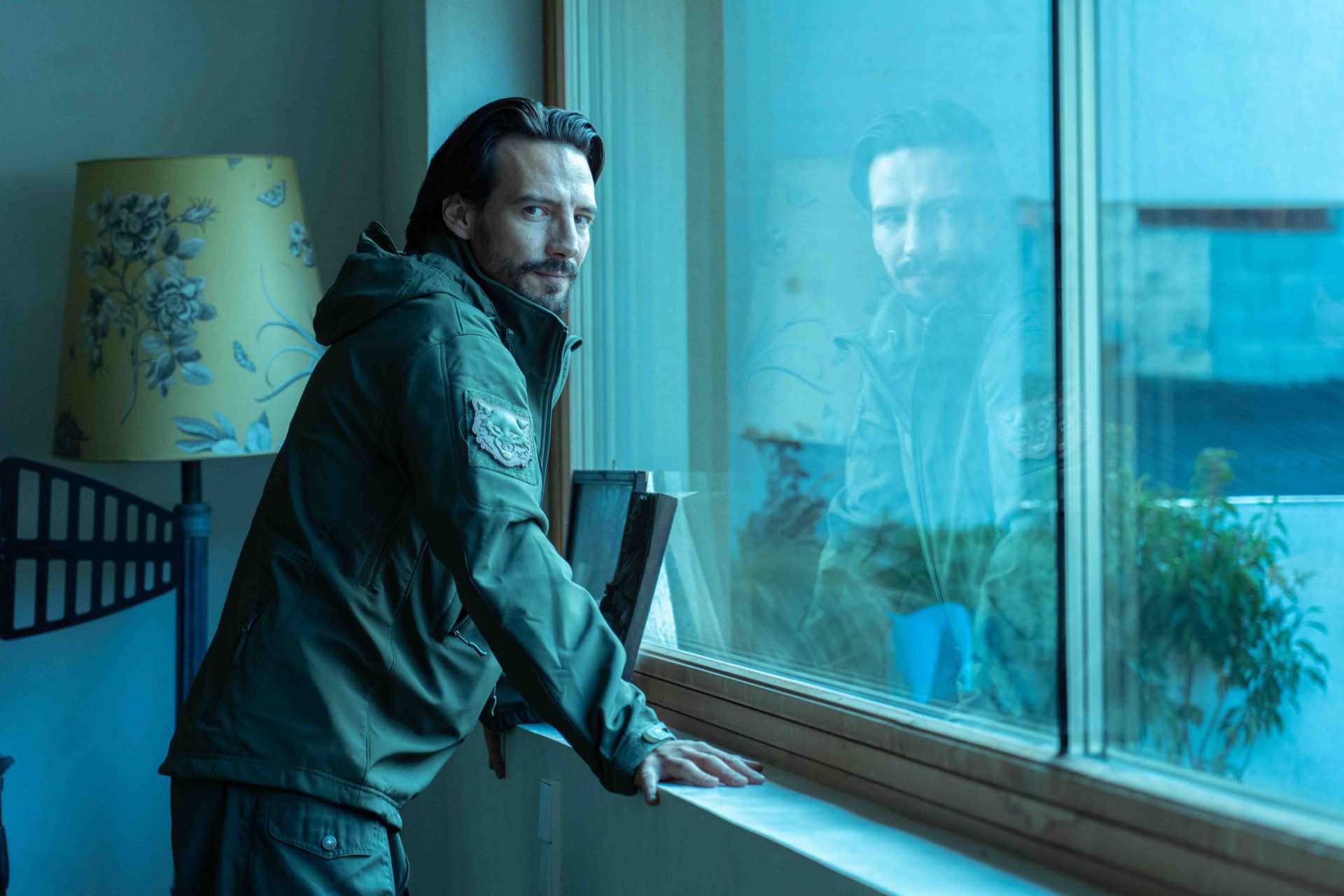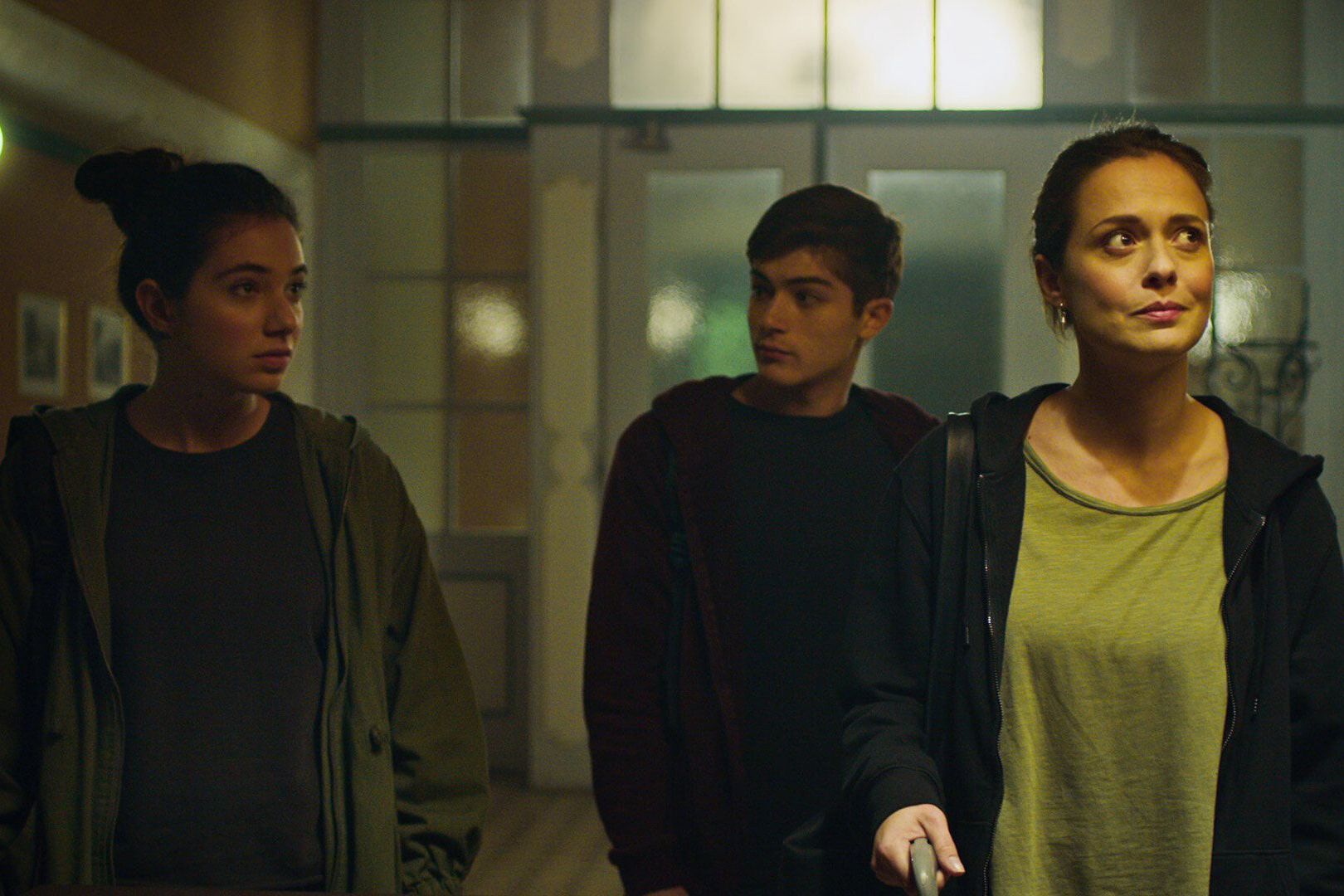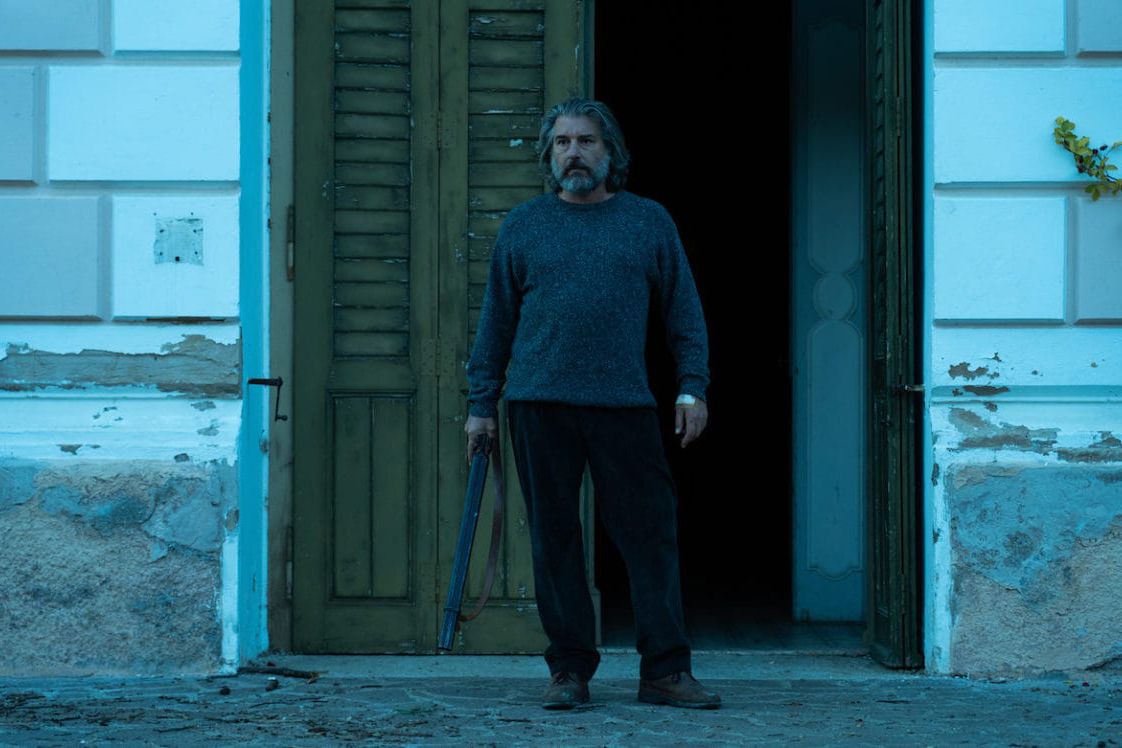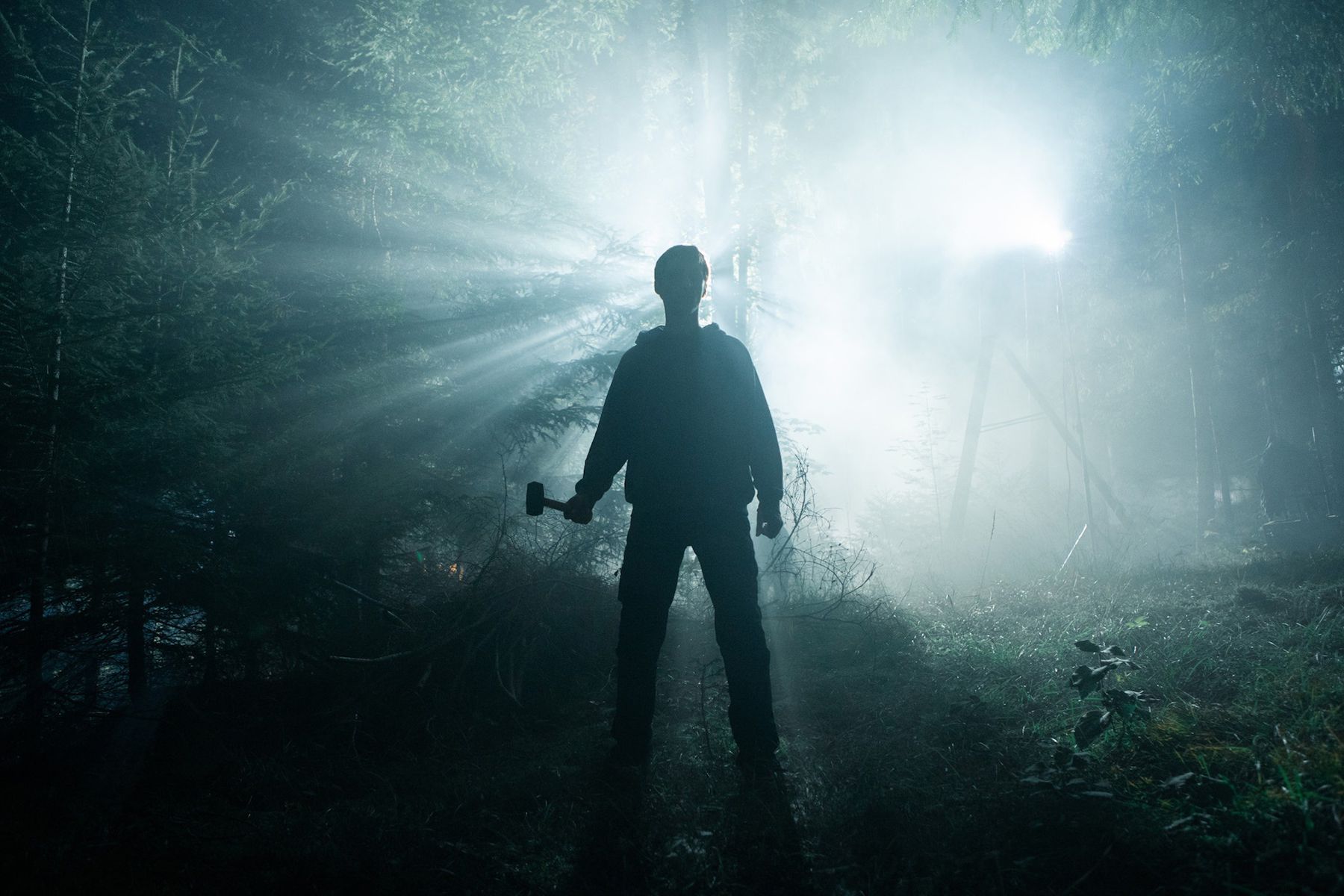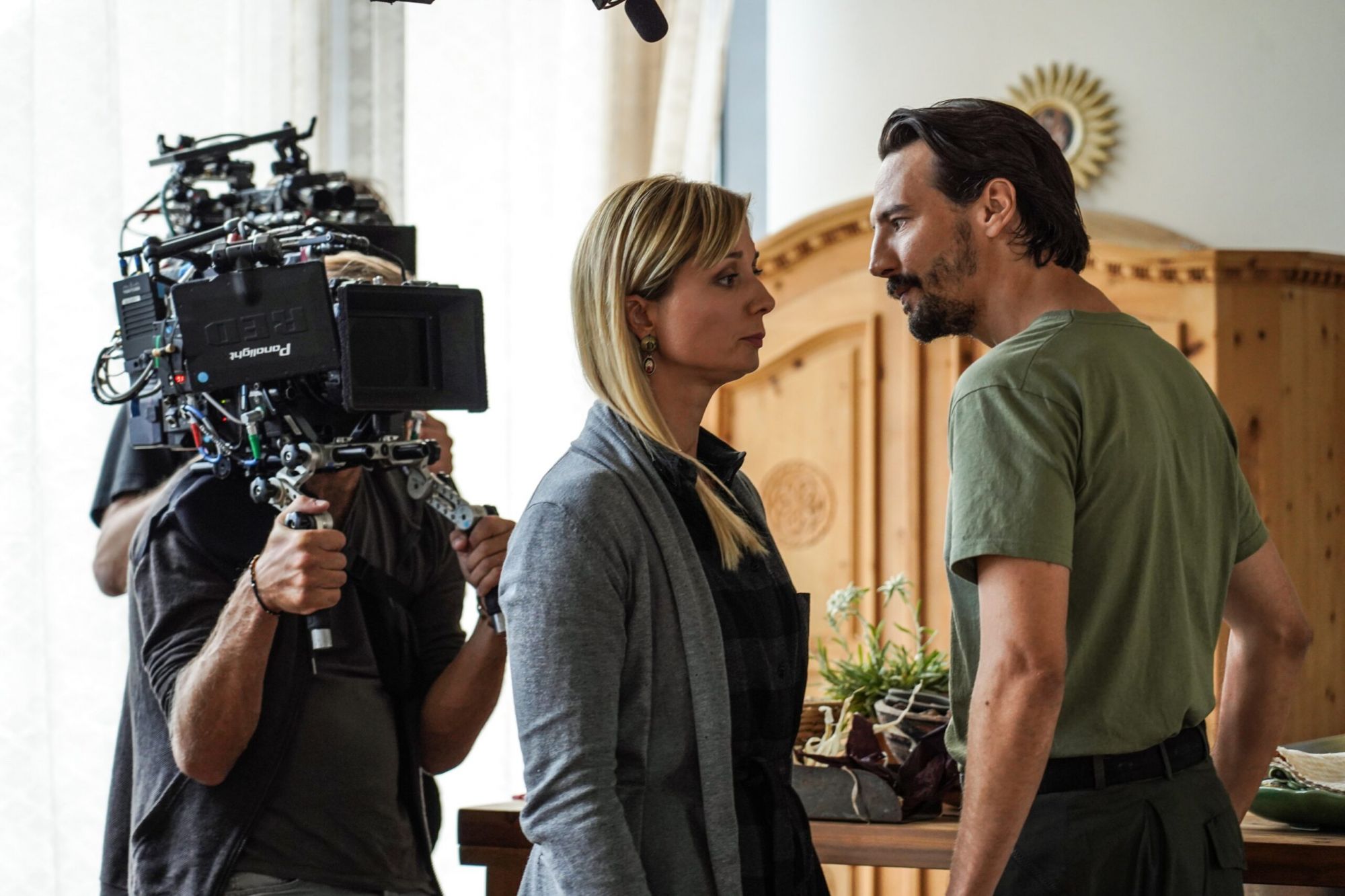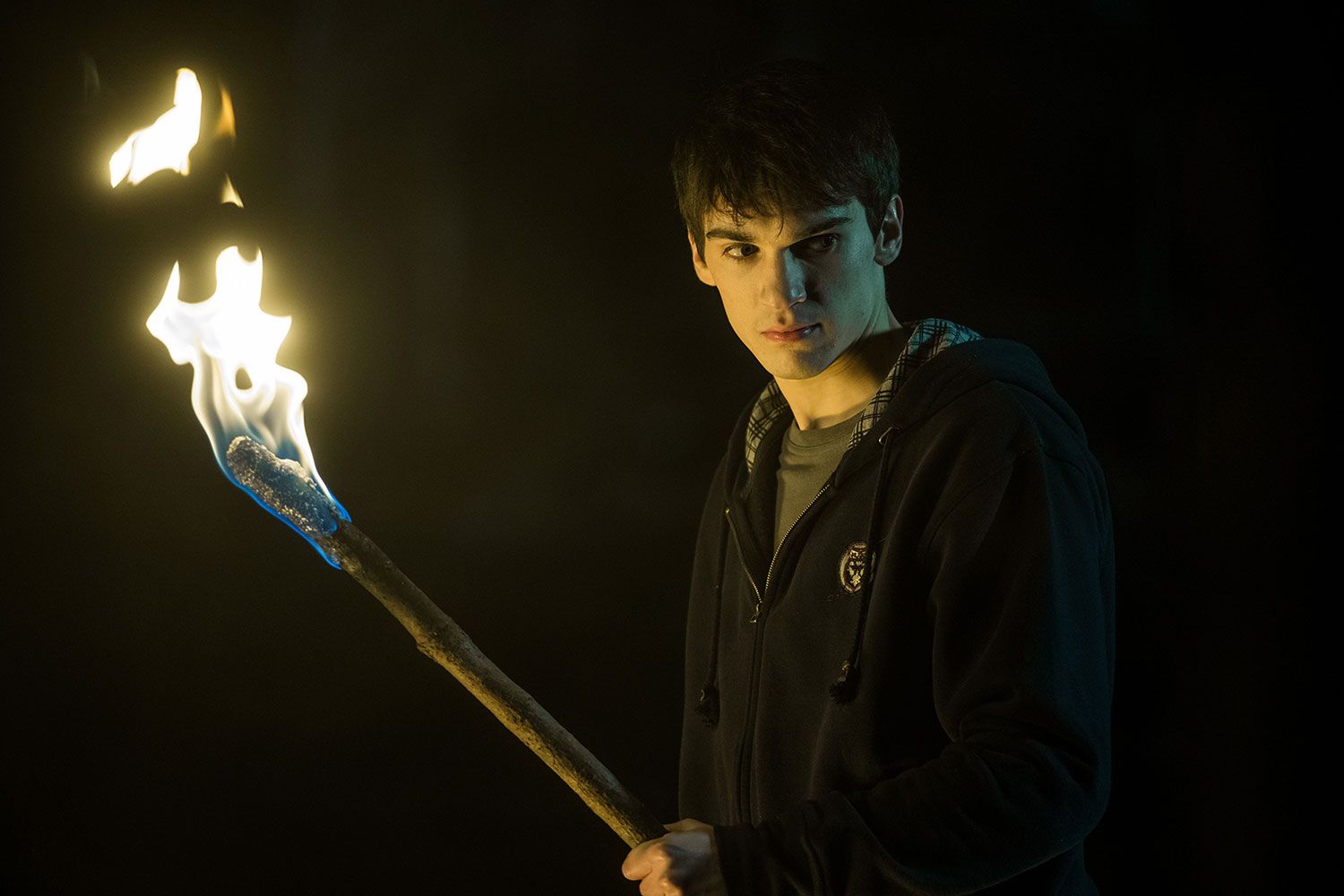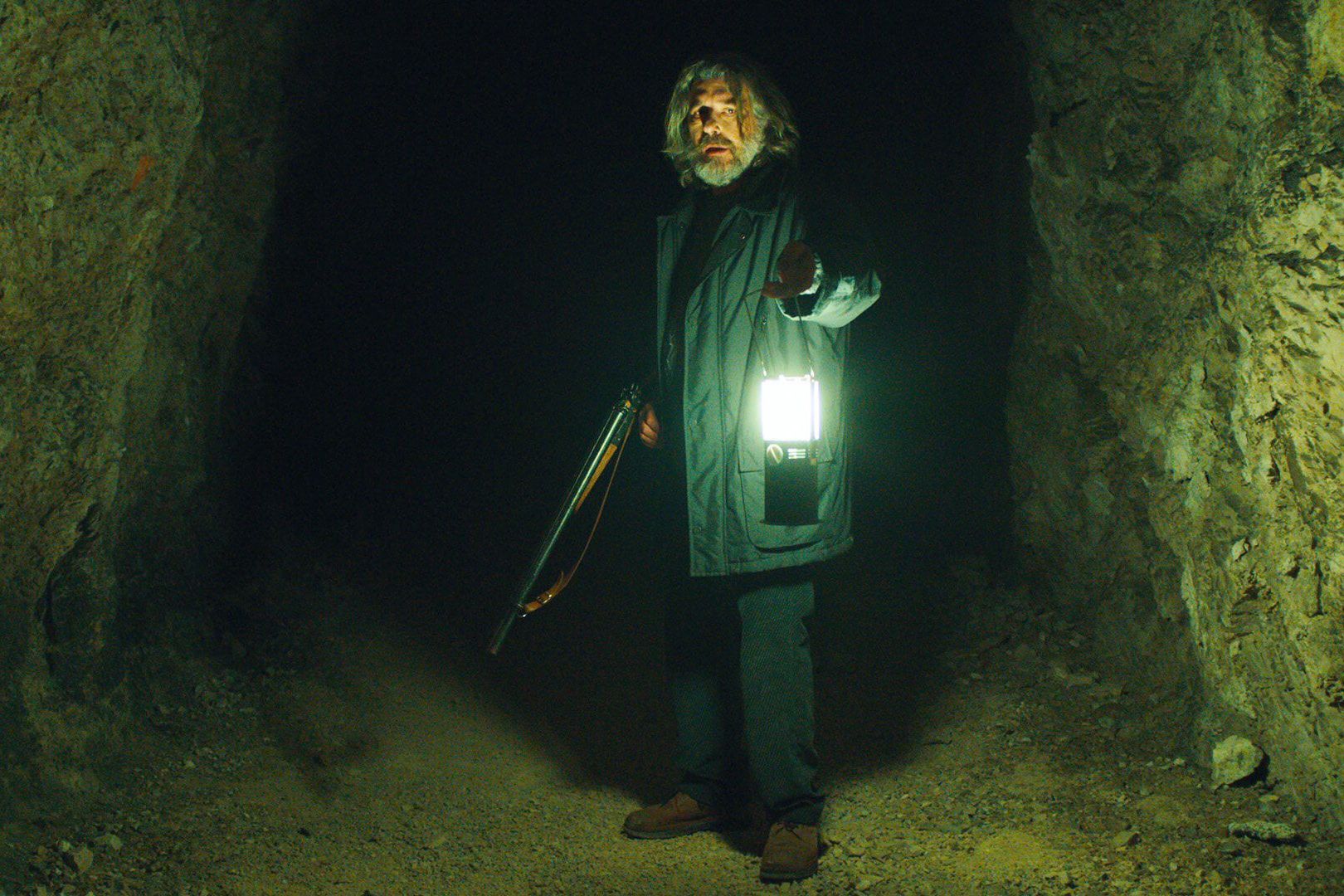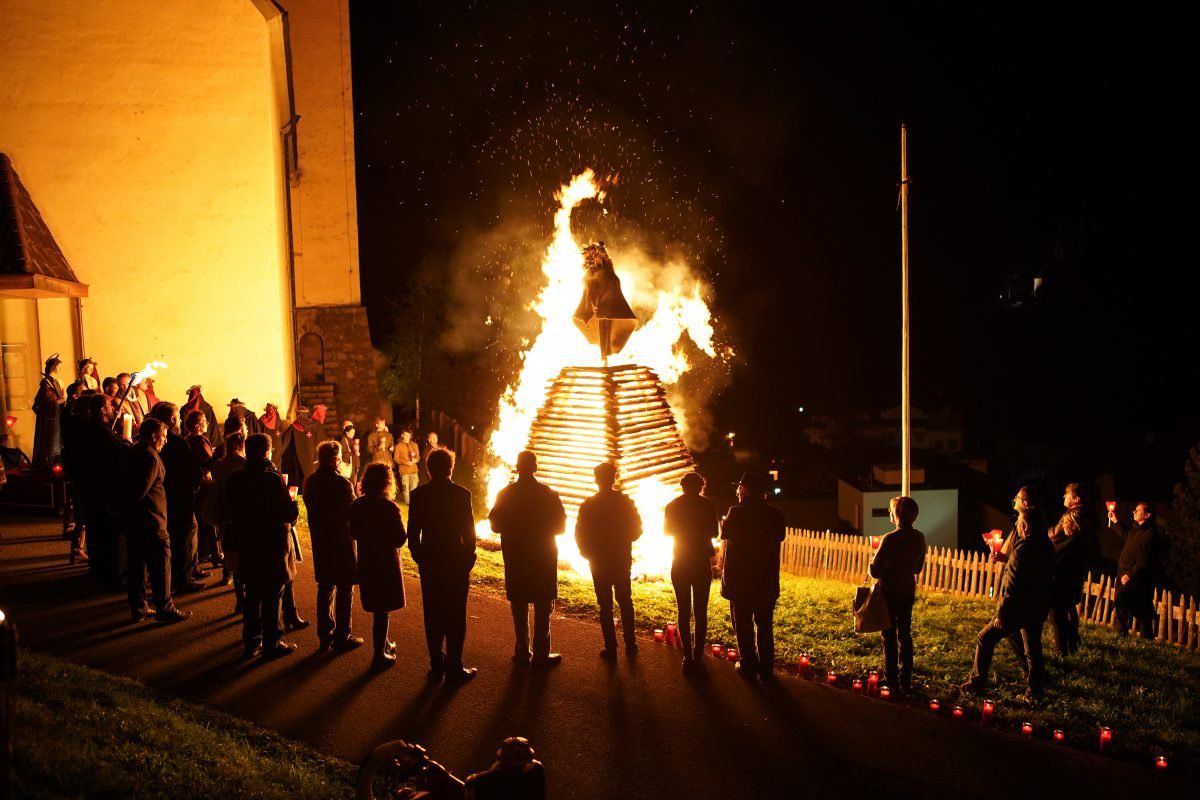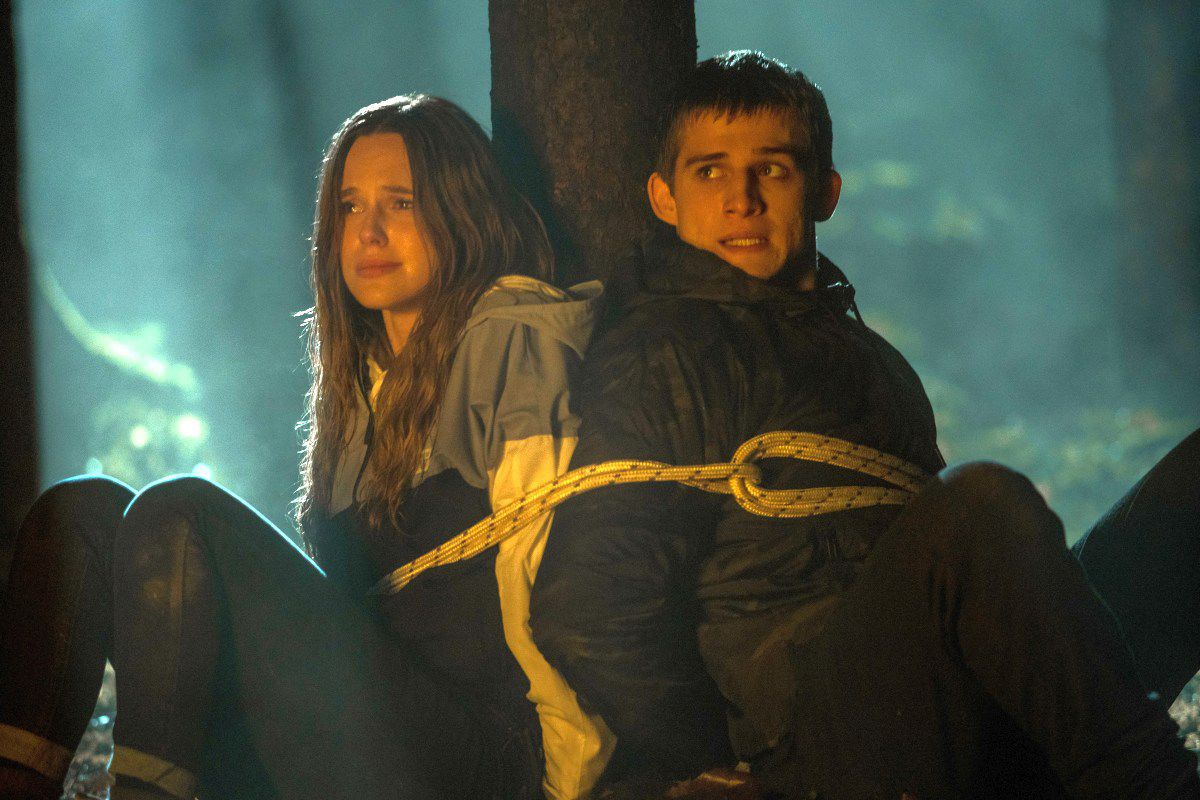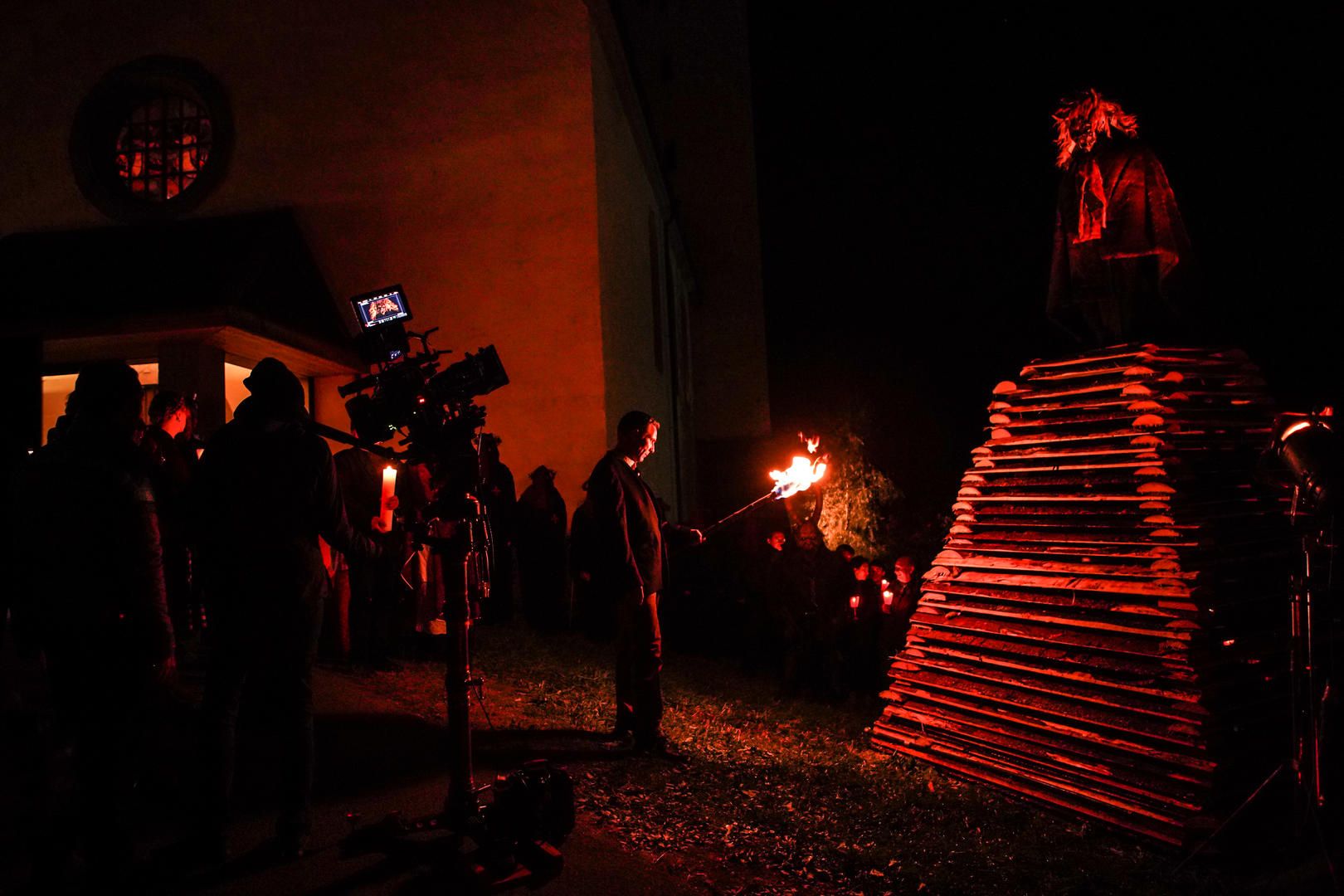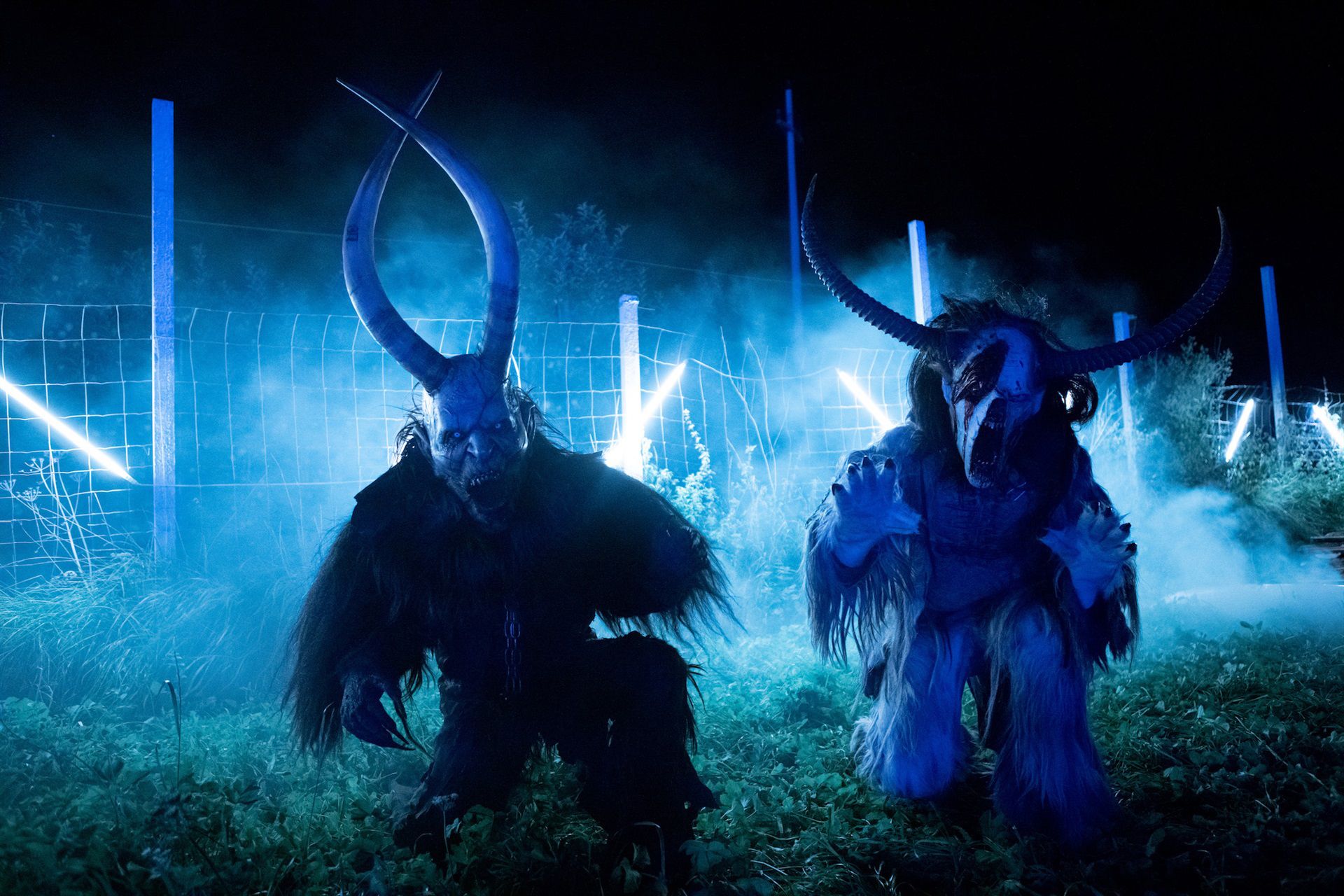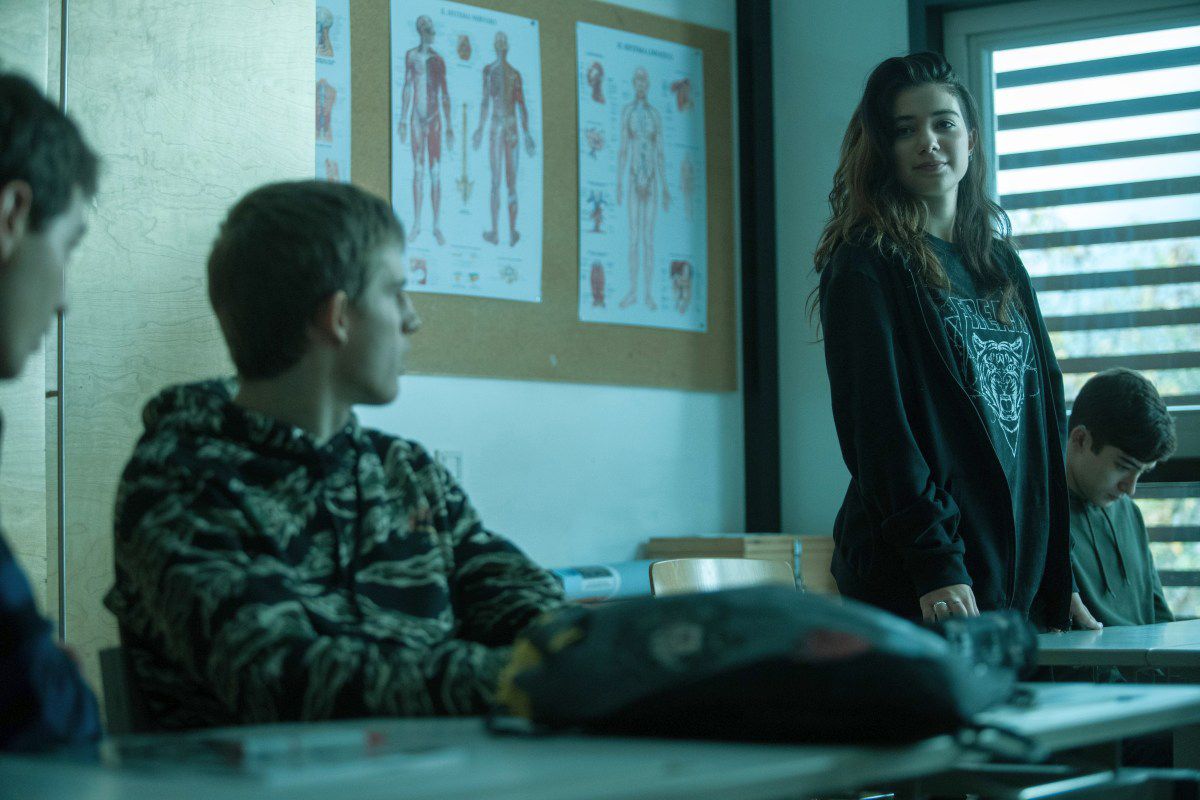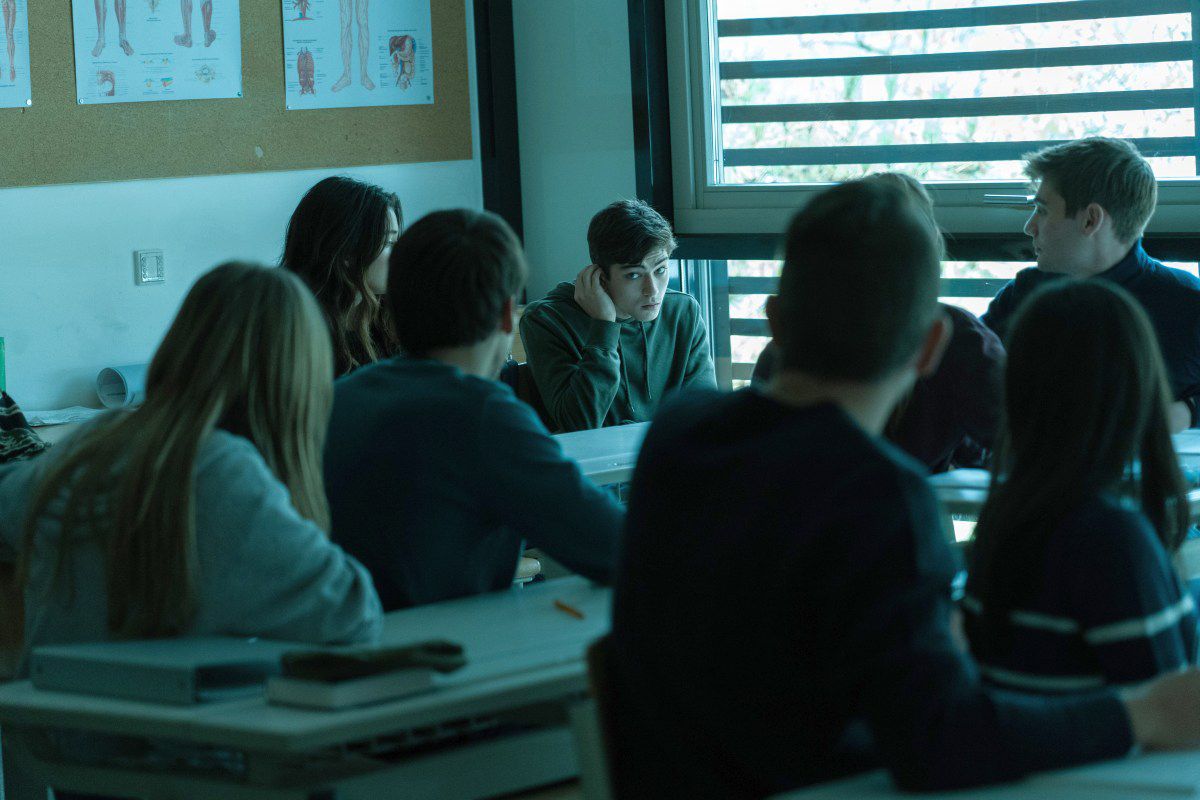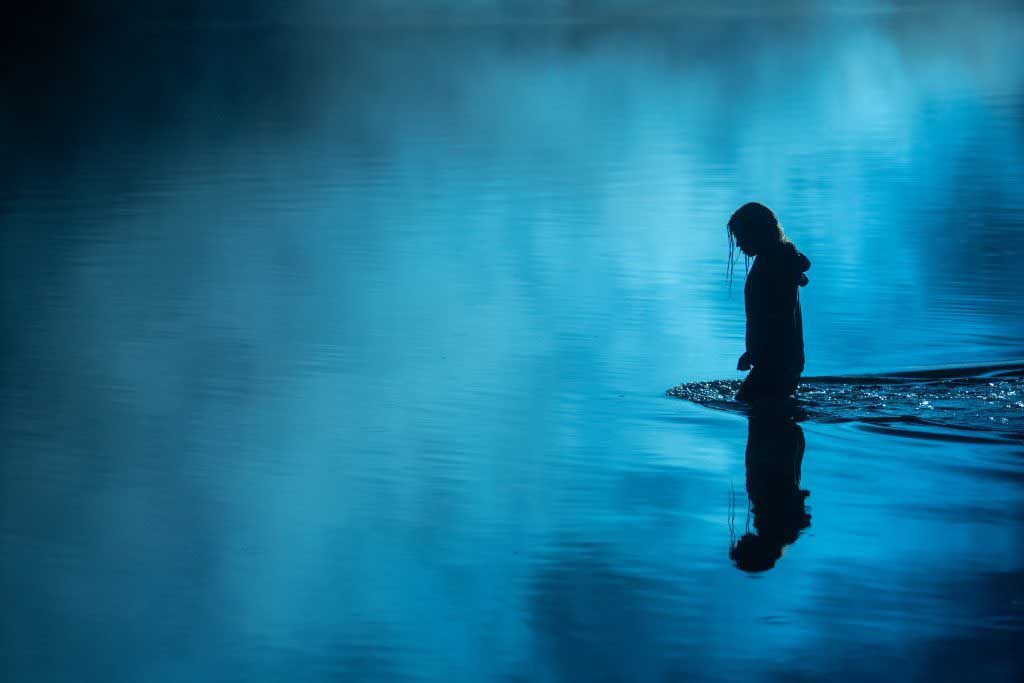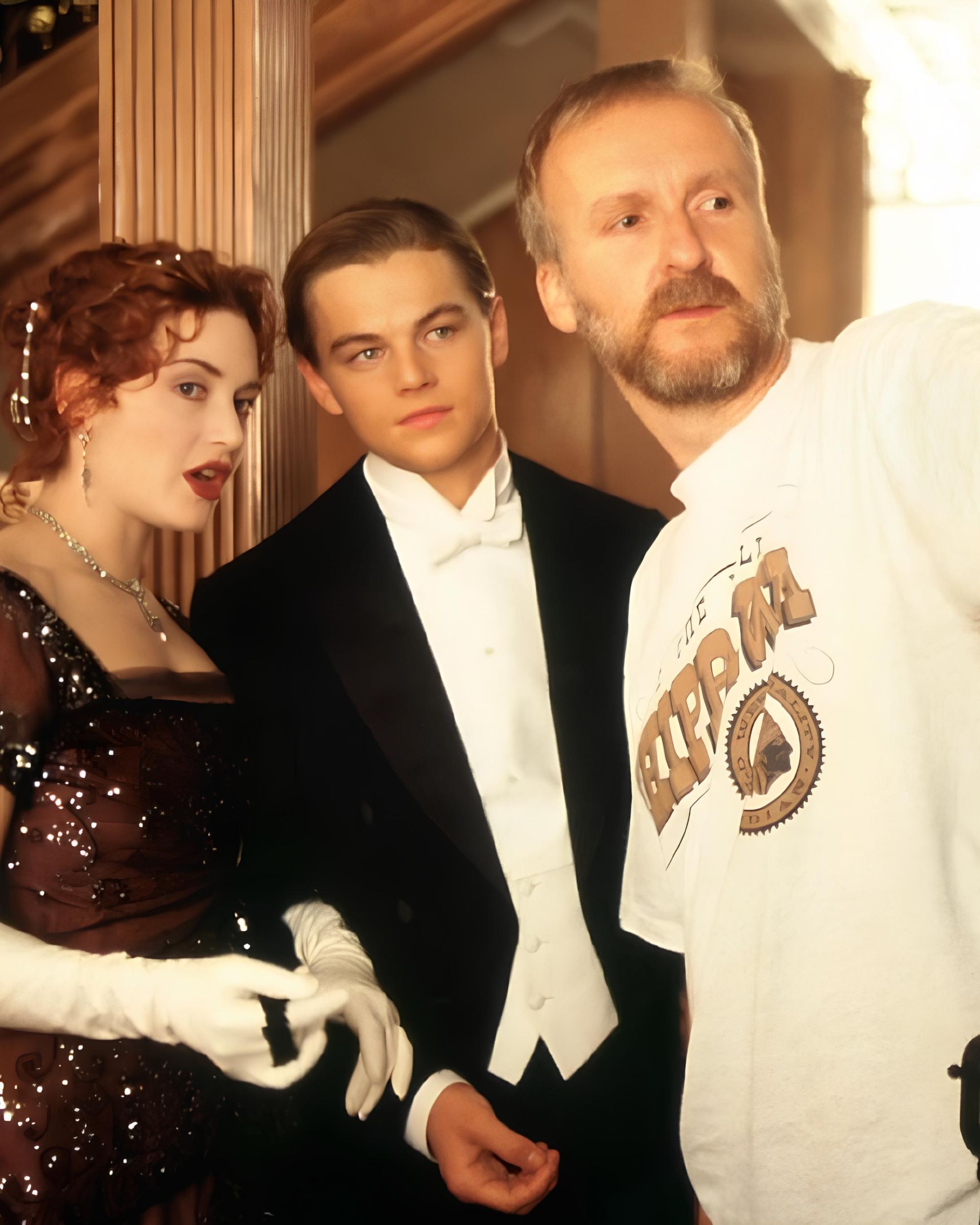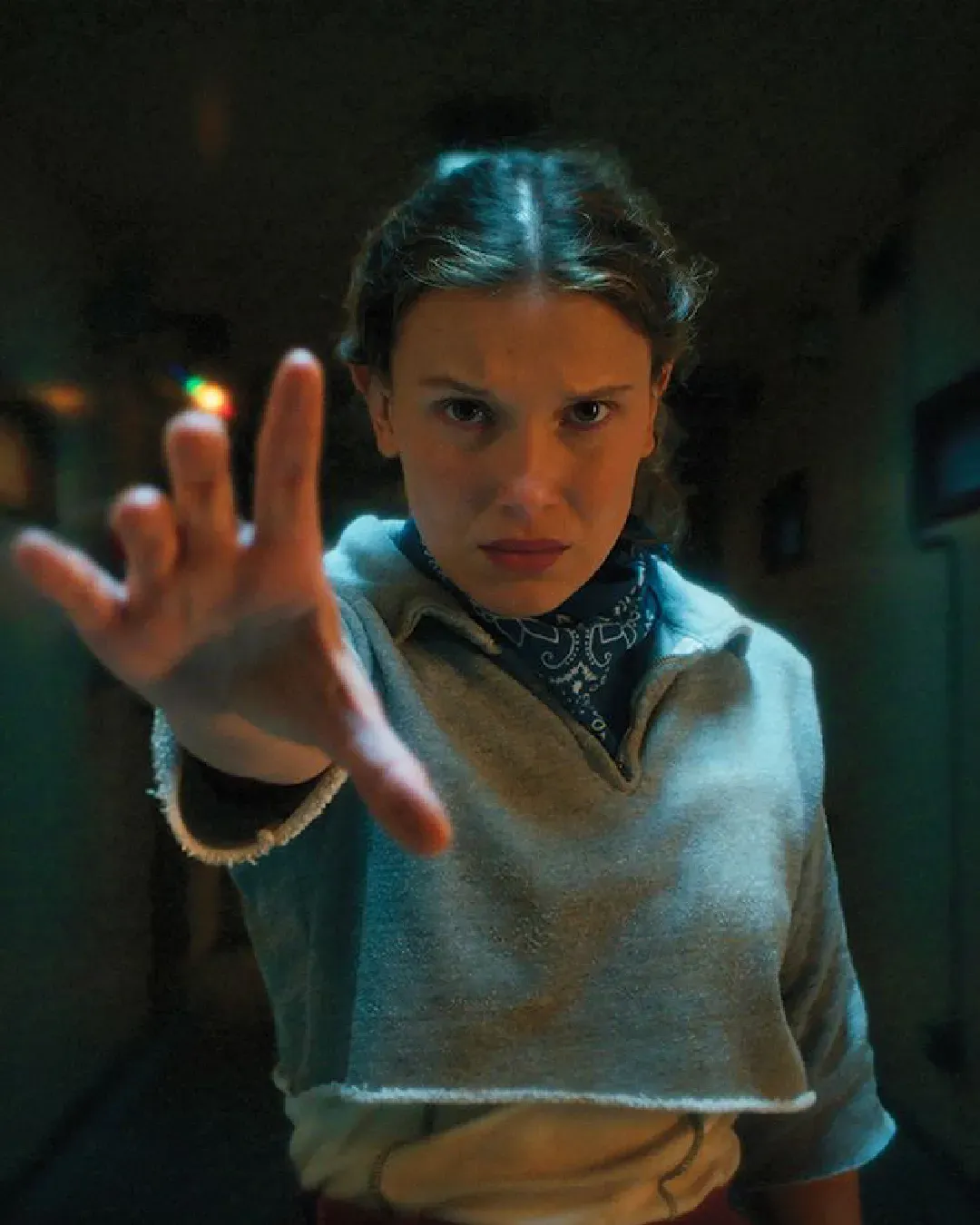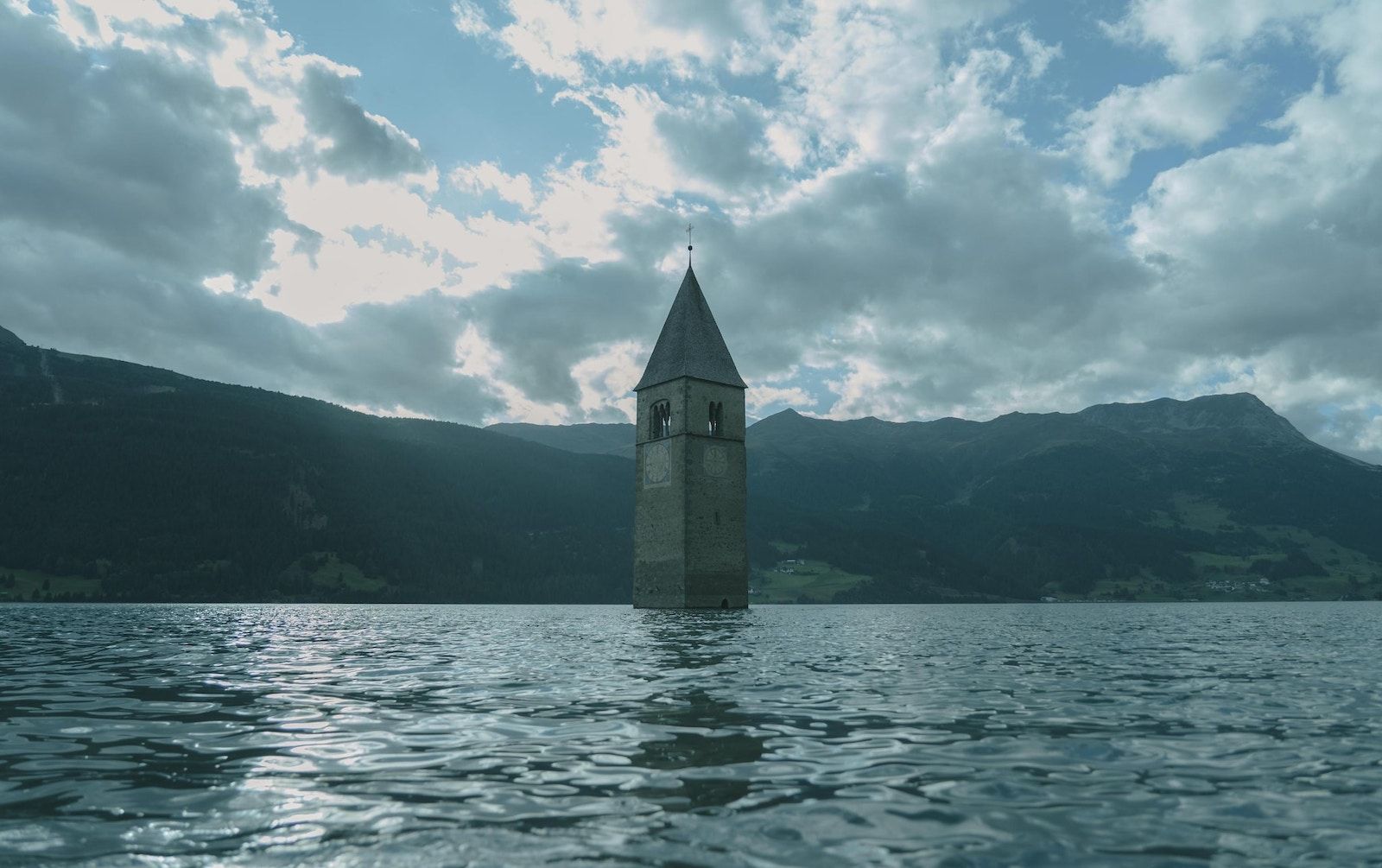
What About ‘Curon’ The latest series by Netflix Italia embraces the folk-horror tradition and shows places that have never been explored by Italian television
In the past few days on Netflix appeared the profile of a fascinating bell tower, emerging from the surface of a lake. The picture was suggestive, to say the least: the bell tower was the one of the old church in Curon Venosta, a small village in Trentino Alto Adige, North of Italy that was drown by the construction of a dam after it was destroyed by the bombs during World War II. This almost supernatural landscape is the background of the latest Netflix Italia original production: Curon, available from June 10, 2020.
Following the music, summer and the beaches as seen in Summertime, Curon marks the debut for Netflix Italia with the folk-horror genre, a genre that was almost never considered by Italian television. In a streaming offer already dominated by teen dramas this brand new series, that immediately flew up in the platform's Top 10, aims to mix some horror hints with a teenager story. Furthermore, it shines a light on a place that has never been seen in television before, maybe because it was a little snubbed: the Northern Italian province, made of high pines woods, small villages and terrible secrets. It is not casual that it has already been compared to other series as Dark and Les Revenants, still in some ways Curon also refers to Twin Peaks and Italian horror cinema from the Seventies.
The plot reflects a typical horror story: run away to Milan after some mysterious episodes that destroyed her family, Anna Rainer comes back to Curon after 17 years and she takes with her her 17 years old twins. Despite she's not welcomed there, not even by her father - who has always stayed in their family's great hotel, now empty - suddenly she disappears. Her disappearance opens a real Pandora's box and sets all the town's secrets free. The Curon's lake, in fact, is not just only hiding the rubbles of the ancient village, but is the place from which some "shadows" come out: real doppelgangers of the people who live in town and that obviously don't come in peace (hence the double “O” that you can read on the title). Considering that the only police officer in Curon is a forest ranger whose sense of justice is quite questionable (he is, indeed, Anna's former boyfriend), the two teenagers will have to search for their mother all by themselves, while they struggle with their new provincial life made of raves, brandy and gender-fluid loves. As they say, the plot thickens.
The atmospheres of all the 7 episodes composing the series quite remember the spirit of Italian horror cinema from the Seventies, somewhere between Pupi Avati (La casa dalle finestre che ridono) and Dario Argento, especially for their artisanal roots. Still, the gloomy tones make Curon a kind of Italian Twin Peaks, especially for the lake. Despite this inspiration, the landscape seen in Curon is also very Italian. After all, Netflix Italia's strategy has been already unmasked: to make local products that can be sold to a global public. To reach this goal, the smartest solution is to bet on the "Italianess" of its contents. That is why Curon is full lace curtains, candles and crucifixes: all these elements speak of ancient Italian traditions and habits, a tradition that is still alive in every Italian's grandparents houses.
In the same time, Curon looks also to the contemporary: it is 2020, after all, and teenagers drink alcoholics from the bottle, smoke weeds on their father's SUV and wear Trasher and adidas while they dream to leave the town. The soundtrack represents their generation very well: even if they live in Curon, teenagers listen to Childish Gambino and PAZZESKA by Myss Keta.
Curon is the typical horror in which the characters never run away, but goes down to the basement to see if someone's there (in this case, they go up to the attic). The series takes over some of the most stereotypical elements of the horror genre, in particular the long-loved tradition of doppelgangers, as recently seen in Us by Jordan Peele. Despite the good premises, Curon is still very confused: exception made for some frights, the mystery is not so interesting and the representation of the provincial life, that could have been the real strength of the series, stays on the surface of the lake. Due to an acting that was not at its best, Curon struggles to find the right balance between all the genres that wants to embrace; a balance that was found on the contrary by Dark (though its plot was barely comprehensible).
To look at the glass half-full, at least it shakes the landscape of Italian serial and tv production: while Netflix is preparing to release the film of the summer, Sotto il sole di Riccione (that is basically the 1,5 season of Summertime), Curon tries to show the public something different and, for once, it could still be a breathe of fresh-air.










































